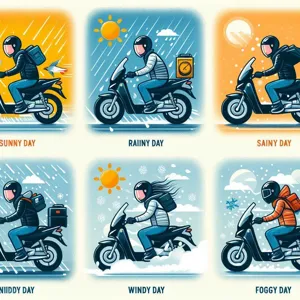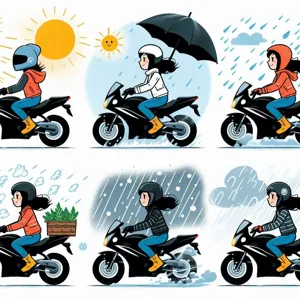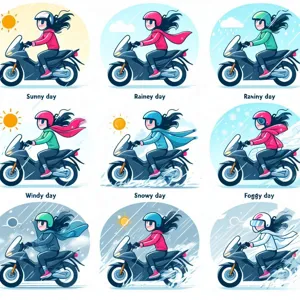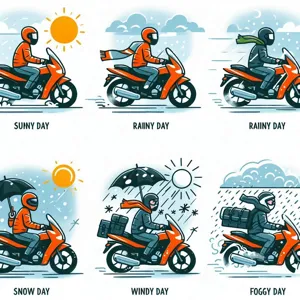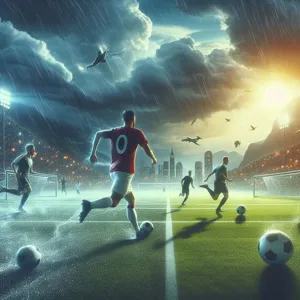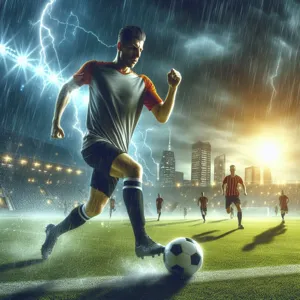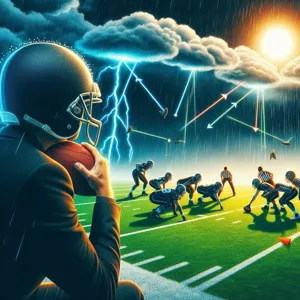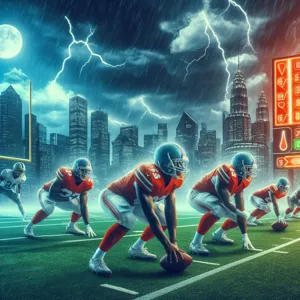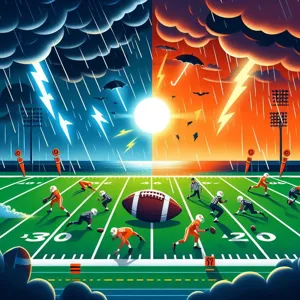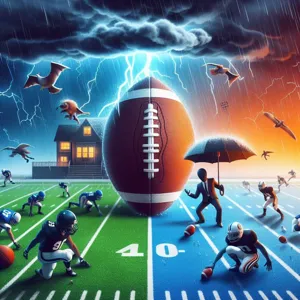The vast expanse of our universe is filled with mysteries and wonders, but few phenomena capture the imagination quite like solar flares.
These powerful bursts of radiation erupting from the sun’s surface can have a profound impact on space weather and even affect life on Earth. As we delve into the cosmos, understanding the different types of solar flares—ranging from the relatively mild C-class flares to the intense X-class flares—becomes essential for astronomers and enthusiasts alike. each type presents unique characteristics, causes, and consequences, making solar flares a fascinating subject of study. Join us on this cosmic journey as we unravel the science behind solar flares, explore their origins, and discover how they interact with our planet, shaping both the beauty of the night sky and the technology that drives our modern world.
1. Introduction to Solar Flares: What Are They?

Solar flares are among the most spectacular phenomena occurring on the surface of the sun, captivating astronomers and space enthusiasts alike. These sudden bursts of energy release vast amounts of radiation, equivalent to millions of hydrogen bombs detonating simultaneously. But what exactly are solar flares?
At their core, solar flares are intense bursts of radiation produced by the sun’s magnetic field. They occur when the magnetic energy that has built up in the solar atmosphere is suddenly released, resulting in a flash of light across the electromagnetic spectrum—from radio waves to gamma rays. This eruption can last from a few minutes to several hours and can produce brightness that is hundreds of times greater than the sun’s usual luminosity.
Solar flares are not only dazzling spectacles; they also have significant implications for our planet. They can disrupt radio communications, gps systems, and even power grids on Earth. Understanding solar flares is crucial, especially as we become more reliant on technology that can be affected by these celestial events.
In this exploration of solar flares, we will dive deeper into their causes, classifications, and the impact they have on our solar system. By the end, you’ll have a comprehensive understanding of these dynamic solar phenomena that not only illuminate our skies but also influence the very fabric of our technological world.
2. The Science Behind Solar Flares: How They Form
To truly appreciate the phenomenon of solar flares, it’s crucial to delve into the intricate science behind their formation. Solar flares are explosive bursts of energy that occur on the sun’s surface, and they originate from the sun’s magnetic field. The process begins in the sun’s outer atmosphere, known as the corona, where magnetic fields become twisted and tangled due to the sun’s rotation and convective movements beneath the surface.
As these magnetic fields interact and build up energy, they can suddenly reconfigure themselves in a process called magnetic reconnection. This occurs when oppositely charged magnetic field lines collide and reconnect, releasing vast amounts of energy in the form of light and heat. The result is a solar flare, which can release energy equivalent to millions of nuclear bombs in mere minutes.
These flares emit radiation across the electromagnetic spectrum, from radio waves to X-rays and gamma rays. The intensity and duration of a flare can vary significantly, leading to different classifications, such as the X-class, M-class, and C-class flares, each indicating the energy output and potential impact on Earth.
Understanding the formation of solar flares not only highlights the dynamic nature of our sun but also underscores the importance of monitoring these events. Solar flares can have profound effects on space weather, influencing satellite operations, communication systems, and even power grids on Earth. By studying the underlying science, we can better prepare for and respond to the cosmic ballet unfolding above us.
3. Types of Solar Flares: An Overview

Solar flares are among the most powerful phenomena in our solar system, releasing vast amounts of energy in the form of radiation and charged particles. These explosive bursts occur when magnetic energy that has built up in the solar atmosphere is suddenly released. Understanding the types of solar flares is essential for both scientists and space enthusiasts alike, as they can have significant effects on space weather and technology on Earth.
Solar flares are generally classified into three main categories based on their intensity: A-class, B-class, and C-class, escalating to M-class and finally X-class flares.
1. **A-Class Flares**: These are the weakest type of solar flares, characterized by their low energy output. Despite their minimal impact, A-class flares can still produce small bursts of radiation that may affect satellites and other space equipment in low Earth orbit.
2. **B-Class Flares**: Slightly more potent than A-class flares, B-class flares can produce moderate radiation bursts. These flares are still relatively harmless but can lead to minor disruptions in radio communications and GPS accuracy.
3. **C-Class Flares**: These flares are of medium intensity and can generate more significant effects. C-class flares can influence radio signals and may produce noticeable changes in the Earth’s ionosphere, which can affect both telecommunications and navigation systems.
4. **M-Class Flares**: M-class flares are strong and can have serious consequences. They can lead to widespread radio blackouts and affect satellite operations. These flares can also trigger geomagnetic storms, which may disrupt power grids on Earth.
5. **X-Class Flares**: The most powerful type, X-class flares, release enormous amounts of energy, capable of causing severe disruptions. These flares can lead to intense radiation storms, affecting astronauts in space, disrupting satellite communications, and even causing fluctuations in electrical grids. X-class flares are often followed by coronal mass ejections (CMEs), which can unleash a torrent of charged particles towards Earth.
By categorizing solar flares in this manner, scientists can better predict their potential impact on space weather and technology on our planet. Awareness of these types allows researchers to develop strategies for mitigating risks associated with solar activity, ensuring the safety of space exploration and the stability of our technological infrastructure on Earth. Understanding the nuances of these celestial events adds another layer of intrigue to our exploration of the cosmos and the powerful forces at play in our solar system.
4. Classifying Solar Flares: The X, M, C, and B Classes
Solar flares, those magnificent bursts of energy from the sun, are classified into distinct categories based on their intensity and impact on our planet. Understanding these classifications—X, M, C, and B—provides insight into not only the behavior of our sun but also the potential effects on space weather that could influence satellites, power grids, and even communication systems on Earth.
**X-Class Flares** are the most powerful of the solar flare categories. With their peak brightness exceeding a magnitude of 10^-4 watts per square meter, these flares can release energy equivalent to millions of hydrogen bombs. An X-class flare can cause significant disruptions to radio communications and navigation systems, and they are often associated with coronal mass ejections (CMEs), which can lead to geomagnetic storms that affect the Earth’s magnetic field.
Next in line, **M-Class Flares** are medium-strength flares that can still create noticeable effects on Earth, particularly for high-frequency radio transmissions and may even result in minor fluctuations in satellite operations. These flares have a brightness threshold between 10^-5 and 10^-4 watts per square meter, making their impact less severe than X-class flares, but still significant enough to warrant close monitoring by space weather scientists.
**C-Class Flares** are the lower end of the spectrum, with a brightness ranging from 10^-6 to 10^-5 watts per square meter. While often too weak to cause severe disruptions, C-class flares can still affect radio communications, particularly in polar regions where the Earth’s magnetic field is weaker. These flares are often seen as harbingers of more intense activity, indicating that the sun might be gearing up for stronger flares in the near future.
Finally, we have the **B-Class Flares**, which are the weakest of the four classifications, with a brightness of less than 10^-6 watts per square meter. These flares are typically inconsequential to Earth, producing negligible effects on communications and technology. However, they still serve an important role in solar observations, as their frequency can provide clues about the sun’s overall activity and the potential for future, more powerful events.
By categorizing solar flares into these classes, scientists can better predict their potential impact on space weather and our daily lives. Whether it’s the awe-inspiring spectacle of auroras brought on by X-class solar flares or the minor disruptions from M-class events, understanding these classifications enhances our appreciation for the complex and dynamic nature of our sun. As we continue to explore the cosmos, keeping an eye on solar activity remains crucial for safeguarding our technological advancements while deepening our understanding of the universe.
5. Characteristics of Each Solar Flare Type

Solar flares, the dazzling bursts of energy erupting from the sun’s surface, are categorized into distinct types based on their intensity and spectral characteristics. Understanding these classifications not only enriches our knowledge of solar dynamics but also helps us grasp the potential impact of these phenomena on Earth and our technological systems.
**1. Class A Flares:**
Class A flares are the smallest and least intense, with peak flux levels less than 10^-7 watts per square meter. Despite their diminutive size, these flares can still produce minor effects on the Earth’s atmosphere, such as slight increases in ionization levels in the upper atmosphere, but typically go unnoticed by most.
**2. Class B Flares:**
Slightly more powerful, Class B flares have peak flux levels ranging from 10^-7 to 10^-6 watts per square meter. These flares can affect radio communications on Earth, particularly in the high-frequency bands, and may induce small auroras near the poles. While not catastrophic, their presence can signal increased solar activity.
**3. Class C Flares:**
Class C flares, with peak flux levels between 10^-6 and 10^-5 watts per square meter, are considered moderate. They can cause short-lived disruptions to radio communications and GPS systems, as well as an uptick in the auroral activity. These flares are more frequent than their A and B counterparts and often serve as a precursor to more intense solar events.
**4. Class M Flares:**
Class M flares are significant, reaching peak flux levels from 10^-5 to 10^-4 watts per square meter. Known for their potential to disrupt satellite operations, these flares can cause widespread radio blackouts and enhance geomagnetic storms on Earth. The energy released during an M-class flare can have profound effects on our technology, leading to increased caution among satellite operators and those reliant on radio communications.
**5. Class X Flares:**
At the top of the scale, Class X flares are the most powerful, with peak flux levels exceeding 10^-4 watts per square meter. These colossal eruptions can unleash tremendous energy, resulting in severe radio blackouts and extensive damage to satellites. Class X flares can also kickstart geomagnetic storms that may disrupt power grids on Earth and pose risks to astronauts in space. The intensity and potential consequences of X-class flares make them a primary focus for solar scientists and space weather forecasters.
Each type of solar flare showcases the sun’s dynamic nature and serves as a reminder of our solar system’s intricate workings. By monitoring these solar events, scientists can better predict their impacts on Earth, safeguarding our technology and enhancing our understanding of the cosmos.
6. The Impact of Solar Flares on Earth
Solar flares, the powerful bursts of radiation emanating from the sun, can have a profound impact on Earth, influencing everything from our technology to our atmosphere. When these celestial events occur, they release an immense amount of energy in the form of electromagnetic radiation, which travels through space and can reach our planet in just a few minutes.
One of the most immediate effects of solar flares is their potential to disrupt communication systems. The intense bursts of X-rays and ultraviolet light can ionize the Earth’s upper atmosphere, particularly the ionosphere, leading to interference in radio signals and GPS navigation. Pilots flying over polar regions, where the influence of solar activity is magnified, may experience challenges with navigation systems, making it crucial for airlines to stay informed about solar activity.
Moreover, solar flares can induce geomagnetic storms when they are accompanied by coronal mass ejections (CMEs)—massive bursts of solar wind and magnetic fields rising above the solar corona or being released into space. When these charged particles collide with Earth’s magnetic field, they can create stunning auroras near the poles but can also lead to more severe outcomes, such as power grid disturbances. In extreme cases, these geomagnetic storms can induce currents in power lines, potentially causing transformer damage and widespread outages.
The impact of solar flares extends beyond technology; they can also pose risks to astronauts in space. High-energy particles from solar flares can penetrate spacecraft and pose radiation hazards to crew members, which makes understanding and predicting solar activity vital for missions beyond Earth’s atmosphere.
In summary, the impact of solar flares on Earth is multifaceted, affecting our technology, safety, and even the natural phenomena we observe. As scientists continue to study these solar events, understanding their implications becomes essential for protecting our assets and ensuring the safety of those venturing into the great beyond.
7. Solar Flares and Space Weather: An Essential Connection

Understanding the intricate relationship between solar flares and space weather is crucial for comprehending how these explosive events can impact our planet and its technological infrastructure. Solar flares, which are sudden bursts of radiation from the sun’s surface, are more than just dazzling displays of energy; they are powerful phenomena that can significantly affect the space weather environment.
When a solar flare occurs, it releases a vast amount of electromagnetic radiation across the entire spectrum, including X-rays, ultraviolet light, and radio waves. This sudden influx of energy can create a cascade of effects, particularly when directed towards Earth. The intensity and duration of a solar flare can lead to disruptions in the Earth’s magnetosphere, resulting in geomagnetic storms that can have serious implications for satellite operations, communications, and even power grids.
The connection between solar flares and space weather also extends to their influence on phenomena such as auroras. As charged particles from solar flares collide with the Earth’s atmosphere, they create beautiful displays of light near the polar regions. However, while these visual spectacles enchant sky-watchers, they also serve as a reminder of the underlying dynamics at play in our cosmic neighborhood.
To effectively prepare for and respond to the effects of solar flares, scientists use advanced models and monitoring systems to track solar activity. Organizations like the National Oceanic and Atmospheric Administration (NOAA) and the European Space Agency (ESA) continuously observe the sun’s behavior, providing critical forecasts and alerts for potential solar events. This knowledge is essential for industries reliant on satellite technology, such as telecommunications and navigation, enabling them to take precautionary measures and mitigate risks.
In summary, the connection between solar flares and space weather is profound and multifaceted. As we continue to explore the cosmos, understanding this relationship is vital not only for enhancing our scientific knowledge but also for safeguarding our technological advancements and ensuring our safety in an increasingly interconnected world.
8. The Role of Solar Flares in Solar Activity Cycles
Solar flares are not just spectacular displays of energy; they play a crucial role in the broader context of solar activity cycles. These cycles, which typically last about 11 years, are driven by the complex dynamics of the Sun’s magnetic field, leading to periods of increased and decreased solar activity. During times of heightened solar activity, such as the solar maximum, the frequency and intensity of solar flares increase dramatically.
At their core, solar flares occur when magnetic energy that has built up in the solar atmosphere is suddenly released. This explosive energy can produce bursts of radiation across the electromagnetic spectrum, from radio waves to X-rays and gamma rays. These intense bursts often correlate with the number of sunspots—dark patches on the Sun’s surface that signify areas of intense magnetic activity. As the sunspot cycle progresses toward solar maximum, we see a surge in these magnetic phenomena, leading to more frequent and powerful flares.
Understanding this relationship is vital not only for astronomers but also for anyone who relies on technology that can be affected by solar activity. For instance, satellites and communication systems can be disrupted by the high-energy particles and radiation emitted during a solar flare. By studying solar flares and their connection to solar cycles, scientists can better predict space weather and its potential impacts on Earth.
Moreover, these cycles are not just a fascinating aspect of solar dynamics; they also serve as a reminder of the Sun’s immense power and its significant influence on our planet. As we explore the cosmos and delve deeper into the mechanics of solar flares, we gain insights not only into the workings of our own star but also into the broader universe, where similar processes may occur. Understanding the role of solar flares within these cycles enhances our appreciation of the intricacies of solar physics and its implications for life on Earth.
9. Detecting and Monitoring Solar Flares
Detecting and monitoring solar flares is a complex but fascinating endeavor, essential to understanding our dynamic solar system and its impact on Earth. Solar flares are sudden eruptions of intense high-energy radiation from the sun’s surface, and their detection relies on a sophisticated array of instruments and technologies.
At the heart of solar flare detection are satellites equipped with specialized sensors designed to observe the sun in various wavelengths. The Solar and Heliospheric Observatory (SOHO), for example, has been a key player in monitoring solar activity since its launch in 1995. It captures real-time images of the sun, providing scientists with critical data about solar flares as they occur. Similarly, the Solar Dynamics Observatory (SDO) offers a continuous stream of high-resolution images, helping researchers analyze the intricate dynamics of solar flares in unprecedented detail.
Ground-based observatories also contribute to the detection and monitoring process. These facilities utilize radio and optical telescopes to observe solar phenomena, allowing for a comprehensive understanding of the sun’s behavior. By triangulating data from both space and Earth, scientists can better predict when and where solar flares will occur.
In addition to observational tools, advanced computer models play a vital role in interpreting data and forecasting solar activity. These models simulate the sun’s magnetic field and its interactions, helping researchers anticipate flare occurrences and their potential impacts on space weather.
Monitoring solar flares is not just an academic exercise; it has practical implications for life on Earth. Solar flares can disrupt satellite communications, GPS navigation, and even power grids. By detecting and analyzing these events, scientists can issue timely warnings and help mitigate the risks associated with solar storms.
As our technology continues to evolve, so too will our ability to detect and understand solar flares, unlocking the mysteries of the cosmos and enhancing our preparedness for the solar phenomena that shape our planet’s environment.
10. Historical Significant Solar Flares and Their Effects
Throughout history, several solar flares have had significant impacts on both our planet and our technological advancements. Understanding these monumental events not only sheds light on the nature of solar activity but also underscores the importance of monitoring our sun’s behavior for the future.
One of the most famous solar flares occurred in 1859, known as the Carrington Event. This massive solar storm was sparked by a coronal mass ejection (CME) that collided with Earth’s magnetic field, resulting in vivid auroras visible as far south as the Caribbean. The event was so powerful that telegraph systems across North America and Europe experienced widespread disruptions, with operators reporting electric shocks and even fires due to the induced currents. This incident serves as a stark reminder of how vulnerable our technology can be to solar activity.
Fast forward to the late 20th century, the 1989 Quebec blackout was another significant event linked to solar flares. A powerful solar storm caused geomagnetic disturbances that resulted in a nine-hour blackout affecting millions of people in the province. The incident highlighted the potential for solar flares to disrupt not just communication systems, but also critical infrastructure, prompting governments and scientists to take solar weather more seriously.
In more recent years, the solar flare of 2012, while fortunately directed away from Earth, was a close call that could have had catastrophic consequences. This “near-miss” CME had the potential to produce widespread electrical outages and damage satellites if it had been directed toward our planet.
These historical examples illustrate the profound effects that solar flares can have on both technology and daily life. They serve as a crucial reminder of the dynamic relationship between our sun and Earth, emphasizing the importance of continued research and monitoring of solar activity. By understanding the implications of past solar flares, we can better prepare for future events and safeguard our technological infrastructure against the unpredictable whims of the cosmos.
11. The Future of Solar Research: Understanding Flares
As we stand on the brink of a new era in space exploration, the future of solar research promises to unveil even more about the enigmatic nature of solar flares. These powerful bursts of radiation and energy from the sun not only shape our electromagnetic environment but also hold critical clues about the sun’s behavior and its impact on our planet. With advancements in technology and observational techniques, researchers are gaining unprecedented access to the sun’s dynamics.
Satellite missions such as the Parker Solar Probe and the Solar Orbiter are paving the way for groundbreaking discoveries by venturing closer to the sun than ever before. These spacecraft are equipped with advanced instruments designed to study solar flares in real-time, capturing data on their origins, composition, and the mechanisms that trigger these explosive events. As we gather more data, scientists are beginning to piece together the intricate puzzle of solar activity, examining how flares interact with the solar wind and influence space weather.
Moreover, the integration of machine learning algorithms is revolutionizing our approach to analyzing historical solar data. By sifting through vast datasets, these algorithms can identify patterns and predict flare activity with increasing accuracy. This predictive capability could prove invaluable in safeguarding our technological infrastructure on Earth, as solar flares can disrupt satellites, communication systems, and even power grids.
In the coming years, researchers aim to deepen our understanding of the correlation between solar flares and other solar phenomena, such as coronal mass ejections and sunspots. By establishing a more comprehensive framework of solar activity, we will not only enhance our understanding of the sun itself but also improve our preparedness for the potential effects of these celestial events on our everyday lives. The future of solar research is bright, and as we explore the cosmos, each discovery about solar flares brings us one step closer to fully understanding our dynamic star and its influence on the solar system.
12. How to Protect Technology from Solar Flares
As we delve deeper into our understanding of solar flares and their potentially disruptive effects on technology, it becomes increasingly important to implement effective protective measures. Solar flares, massive bursts of energy from the sun, can unleash electromagnetic radiation that poses a risk to satellites, power grids, and even individual electronic devices. Here are some strategies to safeguard technology from these celestial phenomena.
One of the most critical steps in protection is investing in robust shielding for sensitive equipment. Faraday cages, which are enclosures made from conductive materials, can effectively block electromagnetic fields and shield electronics from harmful solar radiation. For organizations that rely heavily on satellite technology, ensuring that their satellites are equipped with radiation-hardened components can mitigate the impact of solar flares.
Additionally, monitoring solar activity is essential. Organizations and individuals can utilize real-time data from space weather observation agencies, such as NOAA’s Space Weather Prediction Center, to stay informed about impending solar storms. By doing so, they can take proactive measures, such as temporarily shutting down non-essential systems or rerouting sensitive operations to minimize risk.
For industries dependent on continuous power supply, such as telecommunications and healthcare, establishing backup systems is crucial. Uninterruptible power supplies (UPS) and redundant systems can provide a safety net during solar flare events, ensuring that operations can continue without interruption.
Moreover, educating staff about the effects of solar flares and the necessary precautions can foster a proactive culture of preparedness. Regular drills and updated response protocols can ensure that everyone knows how to act when alerts are issued.
In summary, while solar flares are a natural part of our cosmic environment, their impact on technology can be mitigated through strategic planning and protective measures. By prioritizing shielding, monitoring solar activity, implementing backup systems, and fostering a culture of awareness, we can safeguard our technology against the powerful forces of the cosmos.
13. The Importance of Public Awareness About Solar Activity
The importance of public awareness about solar activity cannot be overstated, especially as we delve deeper into the mysteries of our solar system. Solar flares, those massive bursts of radiation and energy from the sun, can have far-reaching effects on our planet and beyond. Understanding these phenomena is not just for scientists; it’s crucial for everyone who relies on technology in today’s interconnected world.
When a significant solar flare occurs, it can disrupt satellite communications, GPS systems, and even power grids on Earth. The potential for such disruptions highlights the need for public education on solar activity. By raising awareness, we can better prepare for the impacts of these cosmic events, whether it’s safeguarding our technology or developing contingency plans for potential outages.
Furthermore, increased understanding of solar flares can foster a greater appreciation for our universe. When people comprehend the intricate workings of the sun and its influence on Earth, they are more inclined to engage with scientific topics and support space exploration initiatives. Educational programs, social media campaigns, and community outreach can all play vital roles in disseminating information about solar activity, making it accessible and relatable to a broader audience.
Incorporating solar activity education into school curricula not only prepares the next generation for potential challenges but also ignites curiosity about space science. As we learn to navigate the complexities of our solar system, a well-informed public becomes an essential partner in promoting scientific literacy and understanding the importance of monitoring solar weather.
In conclusion, by fostering public awareness about solar flares and solar activity, we empower individuals to stay informed and proactive. This collective knowledge is vital for mitigating risks and enhancing our resilience in the face of cosmic events, ultimately helping us explore and understand the cosmos together.
14. Conclusion: The Ongoing Exploration of Solar Flares and Their Mysteries
As we conclude our exploration of solar flares, it becomes abundantly clear that these dynamic phenomena are not just fleeting bursts of energy; they are intricate events that hold the key to understanding our sun and, by extension, our solar system. The ongoing research into solar flares reveals a tapestry of complexities, from their formation and classifications to their profound impact on space weather and terrestrial technologies.
Scientists are still unraveling the mysteries surrounding these energetic eruptions, delving deeper into their origins, triggers, and behaviors. With advancements in technology, such as high-resolution telescopes and sophisticated satellite instruments, researchers are now able to monitor solar activity with unprecedented precision. Each observation contributes to a larger puzzle, helping us predict solar flares and mitigate their potential effects on satellite communications, power grids, and even astronaut safety during space missions.
Moreover, the allure of solar flares extends beyond their scientific implications; they remind us of the sun’s powerful influence on life on Earth. As we continue to launch missions and gather data, we inch closer to comprehending the sun’s behavior, which ultimately enriches our understanding of not just our own planet, but also other celestial bodies within our solar system and beyond.
The journey of understanding solar flares is ongoing, inviting both scientists and enthusiasts to remain curious and engaged. As we look to the future, we can only anticipate the new discoveries that await, each shedding light on the mysteries of our universe and the fiery heart of our solar system. The exploration of solar flares is just beginning, and with every breakthrough, we are reminded of the vastness of space and the wonders it holds.
15. Resources for Further Learning About Solar Flares and Space Weather
As the study of solar flares and space weather continues to evolve, numerous resources are available for enthusiasts and scholars alike to deepen their understanding of these fascinating cosmic events. Whether you’re a seasoned astronomer or just someone intrigued by the mysteries of the universe, these resources can provide valuable insights and up-to-date information.
**1. NASA’s Solar Dynamics Observatory (SDO)**: This is a treasure trove for anyone interested in solar flares. The SDO offers real-time data, stunning visuals, and informative articles about solar activity. Their website features a variety of multimedia resources, including videos and high-resolution images of solar flares captured by their instruments.
**2. american Geophysical Union (AGU)**: The AGU is a leading organization that publishes extensive research on planetary sciences, including solar flares and their effects on space weather. Their journals and educational materials provide in-depth scientific insights and are a great way to keep up with the latest research trends.
**3. Space Weather Prediction Center (SWPC)**: Operated by the National Oceanic and Atmospheric Administration (NOAA), the SWPC provides forecasts, alerts, and warnings concerning solar activity and its potential impacts on Earth. Their website offers valuable resources that explain how solar flares can affect technology, communications, and even power grids.
**4. Online Courses and Lectures**: Platforms like Coursera and edX offer online courses related to astronomy and space science. Look for courses specifically focused on solar physics or space weather to gain structured knowledge guided by experts in the field.
**5. Books and Documentaries**: Several books delve into the topic of solar activity and its implications for life on Earth. Titles such as “The Sun: A Biography” by David A. A. M. Smith and “Solar Storms” by Linda S. Godfrey provide engaging narratives that explore the sun’s behavior. Additionally, documentaries available on streaming services can visually illustrate the impact of solar phenomena.
**6. Community Forums and Social Media Groups**: Joining online forums or social media groups focused on astronomy can be a great way to learn from others. Websites like Reddit have dedicated subreddits where enthusiasts discuss the latest findings, share personal observations, and exchange tips on observing solar flares.
By leveraging these resources, you can enhance your understanding of solar flares and their role in the broader context of space weather. The more informed you become, the better equipped you’ll be to appreciate the beauty and complexity of our solar system’s dynamic nature. Whether you’re looking to conduct personal research, stay updated on solar events, or simply satisfy your curiosity, these resources are your gateway to exploring the cosmos further.
As we conclude our journey through the captivating world of solar flares, it’s clear that these dynamic bursts of energy are not just fascinating phenomena; they are also vital to our understanding of the cosmos and our place within it. From the relatively mild C-class flares to the potentially disruptive X-class events, each type offers unique insights into solar activity and its impact on space weather. By deepening our knowledge of these solar eruptions, we not only enhance our appreciation for the Sun’s complex behavior but also equip ourselves to better prepare for their effects on Earth. As you gaze up at the night sky, remember that the universe is a tapestry of wonders waiting to be explored, and solar flares are just one of the many threads in this magnificent cosmic fabric. Thank you for joining us on this enlightening adventure; may your curiosity continue to shine as brightly as the stars above!

